- Your cart is empty
- Continue Shopping
Akai Professional MPC X 25.65 cm (10.1-inch) Standalone MPC
₹200,000.00Current price is: ₹200,000.00. Original price was: ₹230,641.00.
Akai professional MPC x, standalone mpc with 10.1-inch high-resolution, adjustable
Multitouch display
All electronic products must be used with a step down/up converter for indian voltage compatibility
Genuine Imported Products from USA
Country of Origin: Taiwan
Availability: 2 in stock (can be backordered)
Want to start an argument? Ask a room full of old-school beat makers what the all-time best MPC is. Go ahead — we dare you. There’s no way to know which one was the most popular. There’s the sheer warmth that makes the original MPC60 a classic collector’s piece that’s still pumping out the grooves today, but there’s also the amazing flexibility of the MPC2000/XL and the insane all-in-one features of the MPC5000. The fact is, each classic MPC is the “best” one in the eyes of one producer or another, but one thing’s for sure, Akai Professional’s MPC X is the modern MPC all the diehards have been waiting for.
Regular firmware updates ensure the MPC X is a constantly evolving instrument, ready to inspire and encourage new and innovative uses of its powerful suite of FX, instruments, and features. Instantly map drum pads to a full-scale keyboard roll, or inject some variety into any MIDI part with probability and ratcheting tools. An ever-growing armature of AIR effects takes single-instrument lines or entire tracks into new dimensions, including amp simulations, timbral sculpting tools, a granulation engine, performance FX, vocal augmentation tools, and more, alongside plug-in support for even more creative potential. There’s also support for any class-compliant audio interface so that you can record and mix tracks directly from your Akai MPC unit!
Related Videos: MPC X Standalone Sampler and Sequencer
NOW PLAYING:
Akai Professional MPC X and MPC Live OS 2.3 Update Demo
MPC X – Product Overview Video
MPC X and MPC Live Introduction
Standalone Challenge: Scott Storch
Standalone Challenge: Bryan Michael-Cox
MPC Software 2.0 Feature: Clip Programs
MPC Software 2.0 Feature: CV Programs
MPC Lounge: Drum Warp
MPC Lounge: Easy Drum Layering Using Flatten Pad
MPC Lounge – MPC 2.3 TubeSynth
MPC Lounge: Pitch Shifting and Reverse Trails
Behind the Scenes: UK/EU MPC Artist Days
Installing & Activating New MPC Instruments Tutorial
DrumSynth Plugin Instrument Overview
Studio Tour: DJ Jazzy Jeff on His “Creative Utopia”
MPC Firmware Update 2.8 Overview
Beats by JBlack – (Akai Pro MPC Expansion – Soul Provider) Jam 5
MPC 2.11 Feature Update
Hello Operator, Get me OPX-4!
Beats by JBlack – (Akai Pro MPC Expansion – Soul Provider) Jam 1
Beats by JBlack – (Akai Pro MPC Expansion – Soul Provider) Jam 4
Beats by JBlack – (Akai Pro MPC Expansion – Soul Provider) Jam 3
Beats by JBlack – (Akai Pro MPC Expansion – Soul Provider) Jam 2
The New MPC Plugin Instrument Collection
Intuitive control meets limitless depth
One of the biggest “love it or hate it” factors between MPC models is the balance between user-friendliness and feature depth. From the moment we met the MPC X, the producers here at Sweetwater realized that this argument was over. This music production monster delivers more music production horsepower than any MPC before. Still, with a hands-on user interface that is so intuitive, you can probably pick one up and put it to work without so much as touching the manual.
This ease of operation is entirely based on the integration of its onboard software and complete set of hands-on controls. The sheer surface-level access the MPC X delivers means you don’t have to go deep to find the features you want. Just take a look at the control layout, and you’ll get the idea.
Simply put, if it’s something you’d access with a mouse on a computer DAW, you can grab it on the multi-touch screen. If it’s something you want to control by pushing an actual button or twisting a knob, then there’s a button you can press or an OLED-labeled Q-Link encoder you can reach out and twist. It’s amazing how effortlessly the MPC X keeps up with your workflow!
Is it software or hardware?
Yes. More to the point, MPCs have combined software and hardware from the very beginning. Now, you can run the same software on your MPC X on your computer. That means you can stay hooked up to your computer if you’d like, taking full advantage of your computer’s software and the MPC X’s I/O and controls, but you don’t have to. Think about it — there are workflow options here you’ve never had before.
For instance, you can head out with only your MPC X, a mic or two, and a big smile on your face. MPC software made it easier than ever to take your rig with you and bust it out wherever you feel inspired, lay down some beats, create new samples, and even record vocals right alongside your grooves. Consistent firmware updates expand the groove box’s extensive suite of performance tools, like plugging your favorite USB class-compliant audio interface into the MPC X to directly record instrument and vocal tracks — no DAW required! At the end of the day, you can come back home with a fresh, more or less complete track in your pocket that’s ready for any finishing touches you want to add in the studio. Talk about the best of both worlds!
Command HQ for your entire music rig
With the MPC1000, Akai Professional’s sampling workstations started to gain a reputation as exceptional sequencers, with music producers from a wide range of genres adopting them for their MIDI rigs. When the MPC5000 arrived, you had 64 MIDI channels at your command, and there was no contest as to who ruled the hardware sequencer world.
For a minute there, hardware sequencing took a backseat to all-software production, but in the past few years, not only has MIDI sequencing picked up again, the rise of Eurorack gear and other inexpensive analog synths have brought back CV/gate control in a big way — and the MPC X is ready for it all.
Not to be outdone by the ‘5000, the MPC X includes four MIDI output ports, but it also includes eight 3.5mm CV/gate outputs. That means you can sequence your all-analog synth gear right along with your MIDI sound modules, creating impressive hybrid production systems all controlled from your MPC X and totally locked in with the rest of your tracks. Dual USB ports support MIDI over USB as well, allowing you to integrate your virtual instrument collection or lock to another DAW.
Next, consider the MPC X’s analog I/O. Whether you want to sample and slice vinyl breaks, lay down vocals, or send tracks out to any other gear you have lying around, all the connections are right there.
It always comes down to the sounds
Firstly, if you want any specific sounds in your MPC X, then go nuts. You can load up just about any samples you like or record new ones on the fly. That’s classic MPC power right there. However, if you’re looking for inspiration, you only need to dive into the massive 10GB Vault sound library. We’re talking about the best Capsun Audio, MVP Loops, and CR2 Records have to offer, as well as a ton of unique content from the sampling gurus at Akai Professional.
But what about your sample library? If you’re like some of us here at Sweetwater, you may have a sample library some would call over the top, but you can’t live without it. That’s cool — just load it all up on an external hard drive (HDDs and SSDs supported) and plug it into the 2.5-inch SATA drive connector.
A simpler option is to toss what you want on an SD card or USB flash drive, but it’s all up to you. Any way you look at it, the MPC X makes it easy.
Fire up your flow with the latest firmware
When Akai Professional announced a software DAW that thought like an MPC in 2012, the electronic-music-production world went nuts. The immediate success of the MPC Studio and the MPC Renaissance paved the way for the MPC X and laid the foundation for regular firmware updates, adding many user-requested features that complement the overall design philosophy of the MPC X.
Sweetwater producers loved MPC 2.0’s ability to record audio tracks alongside your loops. This feature alone pushed the MPC software DAW out of the realm of beat production into the big leagues with other loop-based DAWs. While they were at it, Akai Professional updated their time-warp algorithm, making sample stretching and slicing smoother. You’ll feel the enhanced Q-Link control at work by the way your Q-Link knobs respond as though they’re one step ahead of you, and drag-and-drop MIDI and audio make the most of the MPC X’s touchscreen. You can even plug your favorite USB class-compliant audio interface into the MPC X to directly record instrument and vocal tracks. Also included are heaps of incredible, versatile plug-ins such as the Air Vocal Insert Effect Suite featuring Vocal Tuner, Vocal Harmonizer, and Vocal Doubler effects, as well as tone-crafting tools like Flavor, Amp Sim, and Granulator. With recurring, user-focused upgrades like this, you’re more equipped than ever to produce radio-ready tracks with the MPC X.
Akai Professional MPC X Standalone Sampler and Sequencer Features:
A complete standalone DAW that lets you untether from your PC
Everything you loved about sampling and beat-making onboard
Delivers a perfect blend of classic loop and modern track production
10.1-inch multi-touch screen and all the hands-on controls you need
16 of the best velocity-/pressure-sensitive pads you’ll ever feel
16GB of internal storage and external hard drive support
Preloaded with an epic collection of sounds you’ll actually use
Recurring firmware updates introduce new plug-ins: 4 instruments (Hype, Solina, Odyssey, and Mellotron), 7 insert effects (Half Speed, Diode Clipper, Stutter, Diffuser Delay, Sample Delay, Limiter, and Granulator), and AIR Vocal Insert Effect Suite (Vocal Tuner, Vocal Doubler, and Vocal Harmonizer)
Option to plug USB class-compliant interfaces directly in for DAW-less recording of vocals and instruments
MPC Drum and Keygroup Engine Enhancements such as Akai Pro Sample Tail, Dedicated Pitch Envelope, and Keygroup Portamento
Brand-new drum pad effects, including Ringmod, Bitcrush, and Decimator
Pro-quality, all-bases-covered analog I/O connects to everything
Control your entire rig with extensive MIDI, CV/Gate, and USB I/O
Improved Q-Link control and drag-and-drop MIDI/audio also included
10GB Vault sample library includes production-ready content


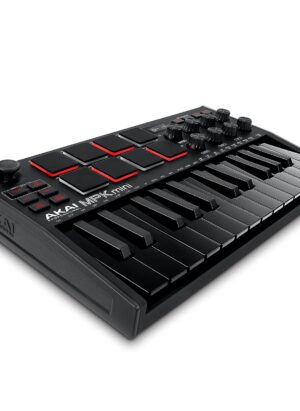
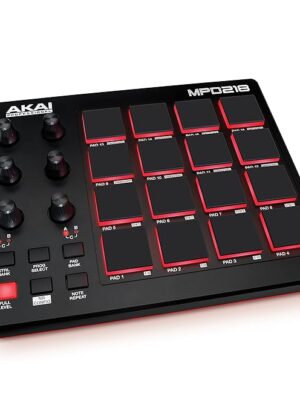

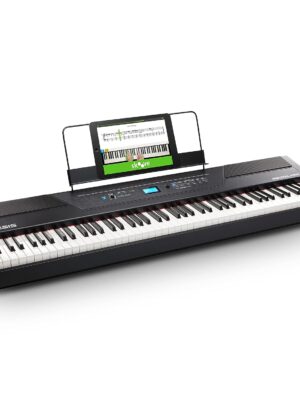
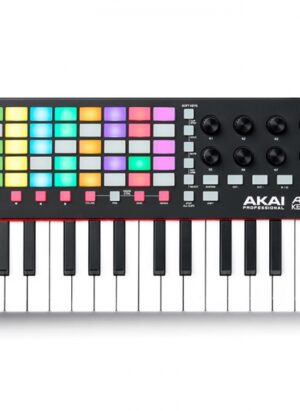

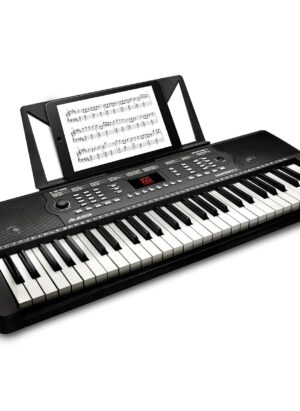
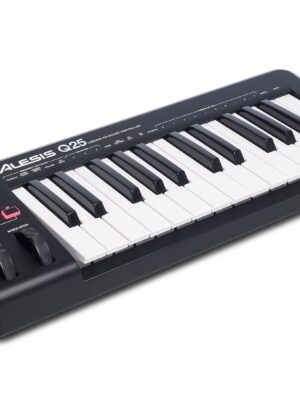
Reviews
There are no reviews yet.